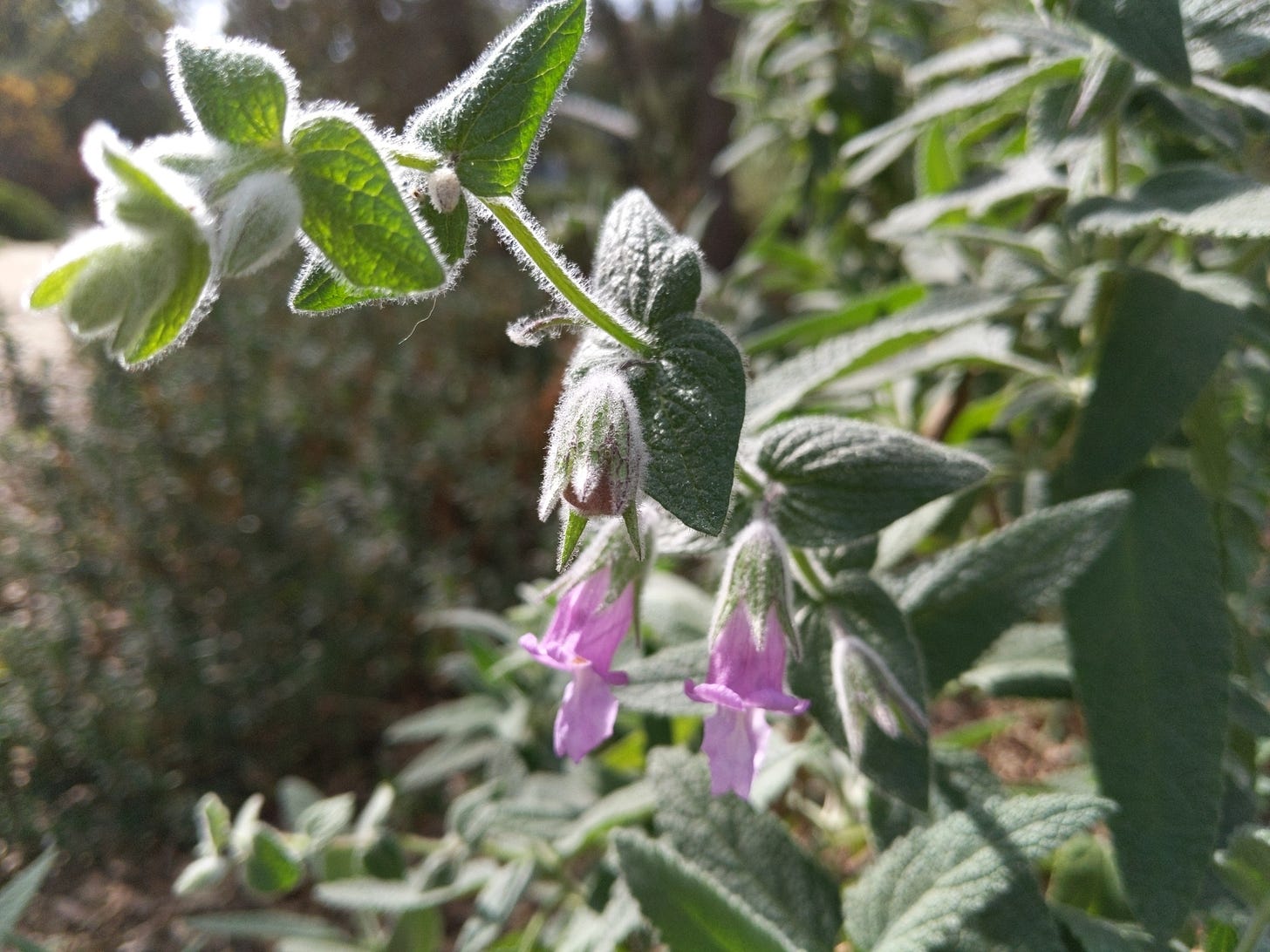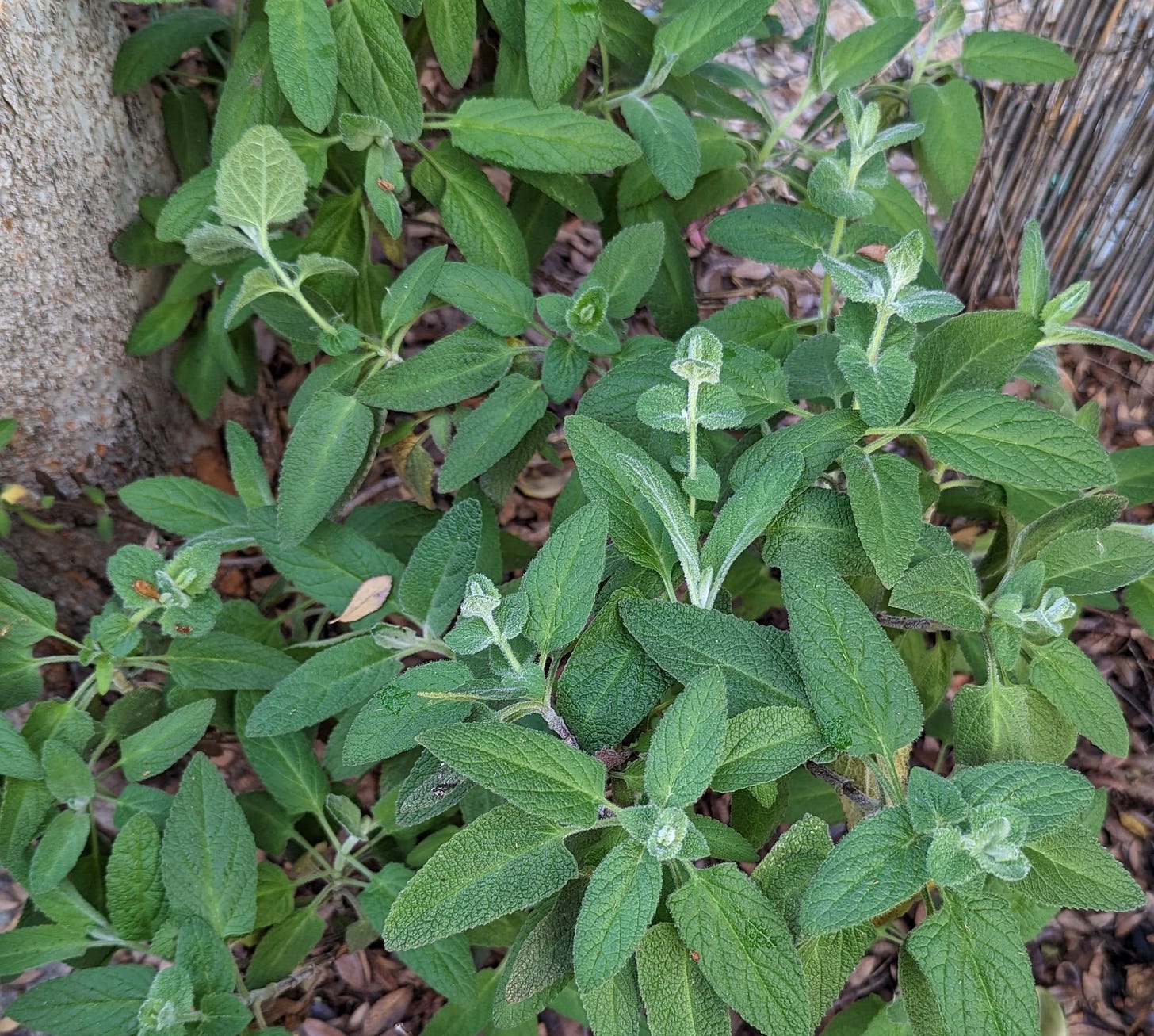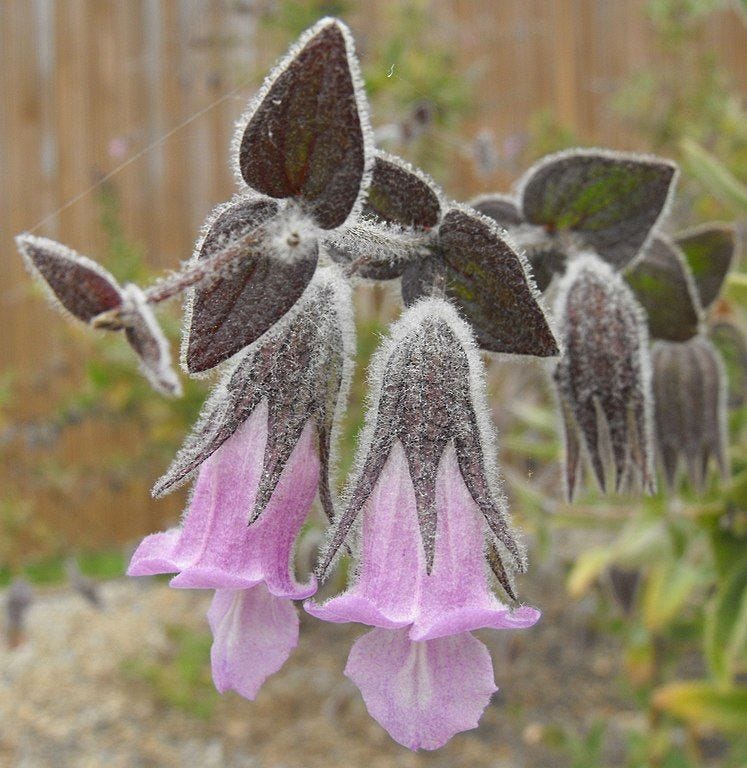Fragrant Pitcher Sage
Fragrant Pitcher Sage is a stunning plant for your Mediterranean Garden
Lepechinia fragrans is commonly known as "Fragrant Pitcher Sage", and it lives up to it's name. This shrub is one of the most pleasingly fragrant plants I have ever come across. It is fairly easy to grow, yet seems to be little-known outside of California Native Plant enthusiasts.
Fragrant Pitcher Sage is part of the Lepechinia genus, which belongs to the Lamiaceae family of plants . Salvia, Basil, Mint, Lavender and Rosemary all belong to this same family. These all share a common characteristic: they are highly aromatic plants, and Lepechinia fragrans is no exception. The fragrance is a lot more musky than sage, a scent that I would describe as like a mixture of Santolina and Salvia.
Lepechina fragrans is a plant that is endemically native to California. It can be found growing naturally in the Santa Monica mountains, San Gabriel mountains and the Channel Islands of Southern California. It does well in on north facing banks of ravines, where there is some moisture and shade.
How to grow
Lepechinia fragans is a very useful plant in the home garden as it is fairly easy to care for and can grow in both sunny and shady locations. As is typical with California natives, the plant often has modest superficial growth in it's first year, preferring to put energy into growing out it's root system. While it is capable of growing in clay soil, it does better in fast draining soil.
When placed in a shady spot, the plant tends to grow taller and quite leggy and may not produce many flowers. In a sunny spot, it will stay quite low, and while it may put on a show in Spring, it often sheds all or most of its leaves in the summer when it becomes dormant due to drought. For best appearance it should be placed in a spot with morning sun and afternoon shade, and pinched back after flowering to keep compact and full.
Water requirements for Lepechina fragrans are low. The natural range for this plant is in a climate that experiences long dry summers. Supplemental water is only needed during dry Winter periods and in it's first year of establishment. Some California native plants do not tolerate summer water, however this does not apply to Lepechinia. This shrub is suitable for placement next to a well-watered lawn.
There are no known major pests or diseases that afflict this plant. Deer pays it no attention either. The branches on young specimens are easily damaged, so this is best planted set back from a walkway.
Appearance
In winter, after the first major rain of the season, it will grow large, green and very fragrant leaves. These are later shed in the dry season and replaced by smaller more gray leaves.
In Spring, Lepechinia fragrans reliably flowers and sometimes if rains are plentiful in early winter, these buds may start appearing by January. Flowers are born on long racemes that extend from the tips of new growth. Flowers are lavender in color with some cultivars lighter or darker, resulting in a range of color from white to purple.
The shape of the flowers gave this plant the common name of Pitcher Sage. The petals create a funnel-shaped throat a with an extended lip that forms a pouring spout.
The most common pollinator for Lepechinia fragrans are bumble bees. Hummingbirds also enthusiastically feed on the nectar.
Lepechinia fragrans typically grows to 4 ft (1.25m) high and 4 ft wide, with the flower stalks extending an additional 1ft (0.3m) away from the plant. Quite often, mature plants will sprawl wider than tall as their stems are weighed down by the lush spring foliage. To prevent any accidental damage, place the shrub at least 2 ft (0.6m) away from a walkway when planting.
Hardiness
Lepechinia Fragrans is hardy to USDA zones 9-11, Sunset Zones 7-9, 14-24. Can become summer-deciduous in drought years.
Cultivars
Lepechinia fragrans 'El Tigre' is a common cultivar found in nurseries. This selection has dark purple flowers. While it's appearance is more impressive, the scent is not as strong as the straight species.





